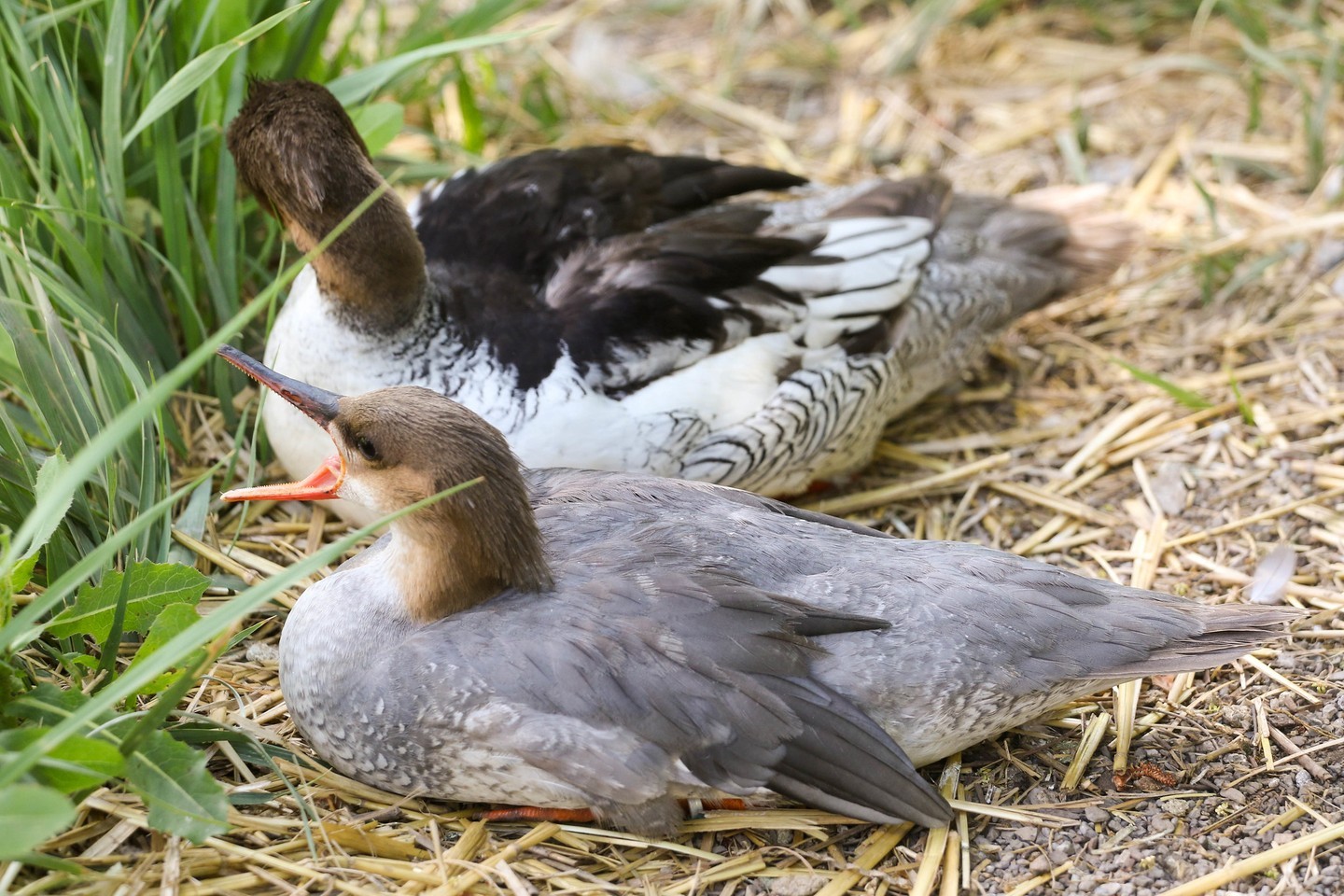Summary:
1. Introduction to Mergansers – Fish-eating Ducks
2. The Long, Skinny Bill and Serrations
3. Unique Adaptations for Catching Fish
4. The Mysterious Tooth-like Serrations on the Female’s Beak
5. Conservation Efforts for Scaly-sided Mergansers
Have you ever wondered about the unique and fascinating aspects of Mergansers? These fish-eating ducks, particularly the Scaly-sided Mergansers, have incredible adaptations, allowing them to thrive in their aquatic habitats. In this article, we will delve into the intriguing details of their long, skinny bills equipped with serrations, which make them adept at catching and holding onto slippery fish. Are you ready to explore the wonderful world of Mergansers?
Mergansers, like these Scaly-sided Mergansers, are known for their fish-eating habits. Unlike regular ducks, they possess a long, slender bill that sets them apart. This bill is visually captivating and plays a crucial role in their survival. The bill is equipped with serrations, which act like tiny teeth, helping these birds catch their slippery prey effectively.
Imagine a Merganser gracefully swimming along a serene river, scanning the water for prey. When it spots a fish, it becomes a predator, ready to make its move. With a swift dive, the Merganser submerges its long neck and quickly propels itself towards the fish. It skillfully maneuvers underwater, using its streamlined body and webbed feet to glide through the currents effortlessly.
It is the unique adaptations of the Merganser’s bill that truly fascinate researchers and nature enthusiasts alike. The serrations on the bill’s edges are extremely sharp, almost tooth-like. These tiny serrations allow the Merganser to grip onto slippery fish, preventing its prey from escaping. Can you spot the tooth-like serrations on the female Merganser’s open beak? It’s truly a remarkable sight.
When a Merganser catches a fish, it doesn’t simply swallow it whole. Instead, it manipulates the fish in its bill, repositioning it to ensure it’s swallowed head-first. This technique makes swallowing easier and protects the Merganser from any sharp fins or spines on the fish’s body. Once the fish is in the right position, the Merganser makes a triumphant gulp, savoring its hard-earned meal.
While the Merganser’s bill and serrations are essential for their fishing prowess, we still don’t know much about this intriguing feature. One hypothesis suggests that the serrations may help channel water and debris away from the bill, maintaining clear visibility underwater. However, more research is needed to ascertain these serrations’ true purpose and function. Nature never ceases to amaze us with its mysteries!
Unfortunately, the Scaly-sided Mergansers, among other Merganser species, face various threats to survival. Habitat destruction, pollution, and overfishing all affect their populations. Conservation efforts are in place to protect and restore the habitats these birds depend on, ensuring the continued survival of this fascinating species.
In conclusion, Mergansers showcase unique and fascinating adaptations, particularly the Scaly-sided Mergansers. Their long, skinny bill equipped with serrations allows them to excel at catching and holding onto slippery fish. These tooth-like serrations are a marvel, acting as nature’s “fishing hooks.” As we continue to learn more about the Merganser’s bill and its serrations, let us also strive to protect these incredible birds and their habitats. Together, we can ensure a thriving future for Mergansers and other wildlife, reminding us of nature’s exceptional beauty and adaptability.
*****
Source Description
Mergansers, like these Scaly-sided Mergansers, are fish eaters. Their long, skinny bill equipped with serrations makes them adept at catching and holding onto slippery fish. Can you spot the tooth-like serrations on the female’s open beak?


